Someone recently asked me to tell him what steps to take when you want to refurbish a table. I tried to help with links to articles from which they might have learned something, promising to get back to them as soon as possible with an article on this exact topic. In the meantime I found SaveMob photos of a table refurbishing and I thought it was the best way to illustrate what I am about to tell you. Of course, this is refurbishing done by craftsmen who only do that. However, if the table (or the object you want to refurbish) is not badly damaged and you are also a DIY enthusiast, you can venture out.
The first stage is problem identification you're dealing with. The table should be carefully examined to see if it needs to be re-glued, if it has parts that should be replaced, or on the contrary, if there are elements that can be kept as they are. In such cases, the finish coat is certainly damaged, so the next step is to remove it. There are situations (like the one in the example), where only the countertop is badly damaged, so there is no point in removing the finish from all the elements of the table.
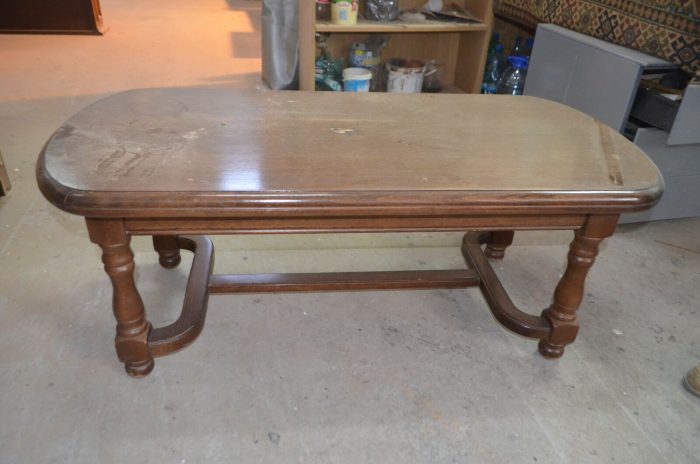
Removing varnish can be done through sanding or by pickling. In most cases, the 2 methods are combined. Paint stripping is done by applying a substance that attacks the varnish (paint stripper), after which the soaked varnish is removed with a stripper. Pickling solutions are available in any DIY store.
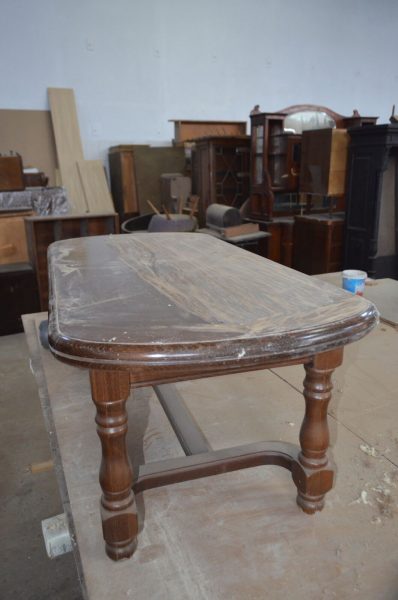
After removing the thick layer of varnish, the surface is washed with thinner to get rid of the last traces of varnish and sanded with wood sandpaper (120-150).
The moment you have reached the wood it is good to examine the surface again. See if there are any fiber pulls, dings or holes that you want to repair. You don't have to be over-zealous with small marks, as they are often what give an old piece of furniture its charm. But if you find that the flaws are large and unsightly, it's a good idea to repair them.
There may be situations, like the table in the photos, where the flaws are very large and then it is necessary to furnishing countertop. In this case I advise you to call in the specialists because it is not a simple thing to do. Sheets of veneer should be paired and stuck together with adhesive paper to create the desired pattern, then cut to the size of the table. The resulting veneer is clamped to the worktop. This must be done very carefully so that no air or dirt is trapped between the plate and the veneer. If the pieces of veneer are not well clamped, they may slip when glued and the operation is totally compromised. I repeat, veneering is not simple, and my advice in this case is to call in specialists.
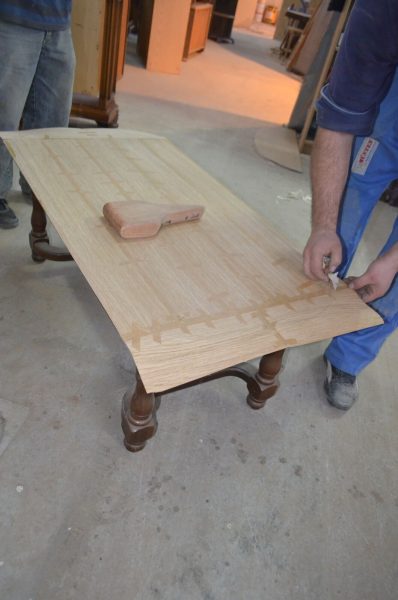
After veneering, the paper with which the pieces of veneer have been attached is sanded away.
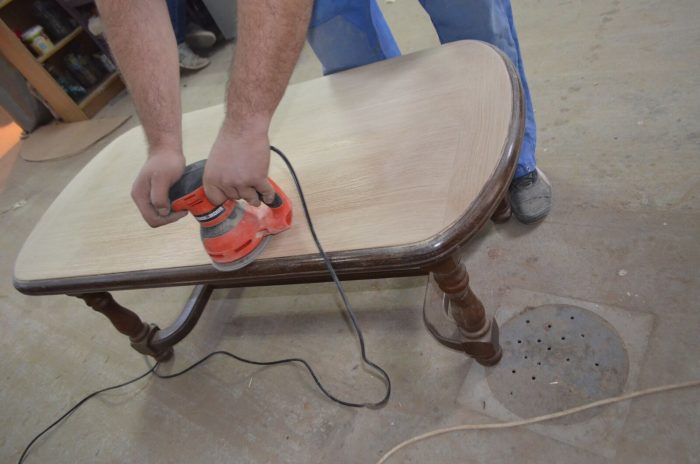
But let's go back to the case where veneering is not necessary and the countertop has been thoroughly cleaned and sanded. Staining should follow. But first you mustand the other parts of the table (legs, bindings), to complete operations that generate dust. Dust, as I always say, is the enemy of the finish and it's best to eliminate any source before you start coloring and varnishing.

For coloring you need to find a baiț to resemble that applied to the table legs. Application can be done with a cloth, sponge or mop. If the stain is solvent based you must have a special solvent mop. The ordinary sponge swells in contact with the thinner. Allow the countertop to dry after dabbing.
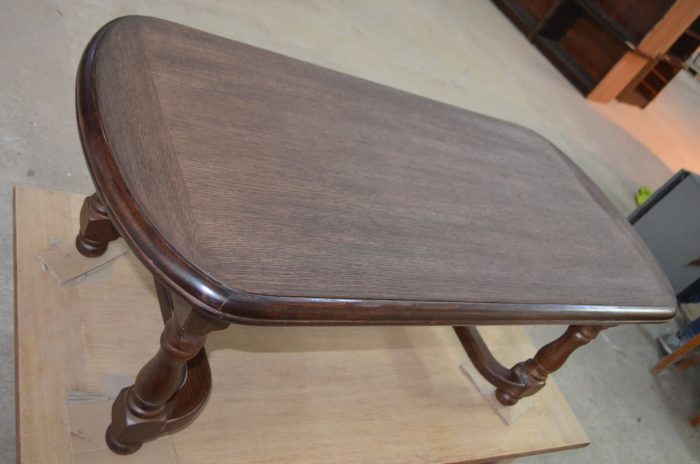
After the berry is completely dry apply a coat of grund colourless (or varnish, if it is the kind that can be applied layer upon layer - universal). Application can be done with a brush or spray gun. If using a spray gun, protect the rest of the table. You can place foil/paper all around and secure it to the edge with adhesive paper. You can find it in DIY stores and it's great because the glue doesn't stick to the wood like scotch tape.
Allow the primer/varnish to dry thoroughly and sand with min. 240 grit sandpaper if matt lacquer is to be applied or min. 400 grit sandpaper if the lacquer will be glossy. You can also use fine abrasive sponges for sanding. The sanding is done to remove the fiber that rises when beating and priming and the remaining bubbles in the film. Without this operation the table will not have a smooth surface.
The final will apply a coat of varnish, this time all over the table. If there is a difference between the color of the top and the legs, you can even everything out by adding a little stain to the varnish (3-5%). Be careful, the stain must be compatible with the varnish (i.e. solvent varnish-solvent varnish or water-based varnish-water-based varnish). It is best to allow the varnish to dry until the next day to avoid printing or other defects.
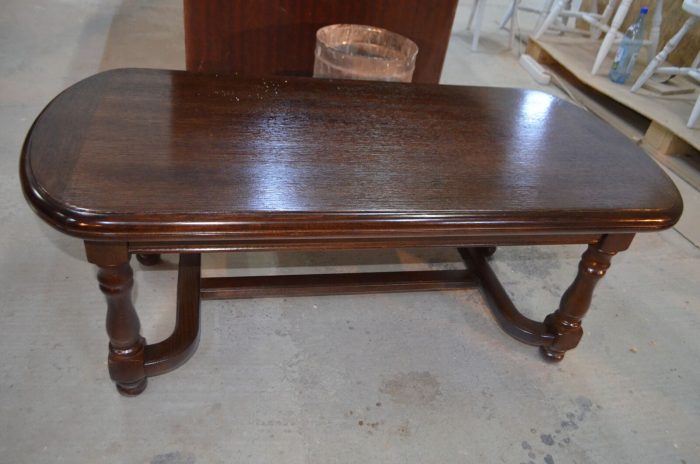
At first glance refurbishing your table doesn't seem like a complicated process, but it's best not to venture out if you don't know anything about refinishing, as you could more likely break than repair. Especially if it's a piece of furniture that's old or that you really care about. Call in the specialists - they'll know what to do.
If you know more about the subject or have had similar experiences in the past, you have the space below in the comments area to enrich the above. If you have any questions leave them in the comments area. I will certainly answer them.

























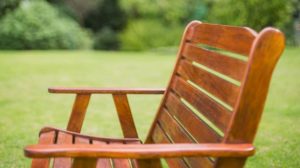


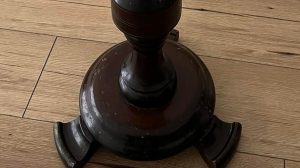
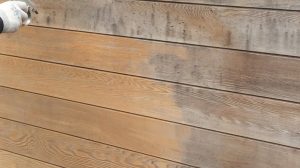

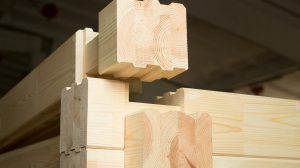




Nice! Hard, patience without tobacco.
I'd like something about reconditioning veneered furniture.
Watch the magazine soon. 🙂
All the best!